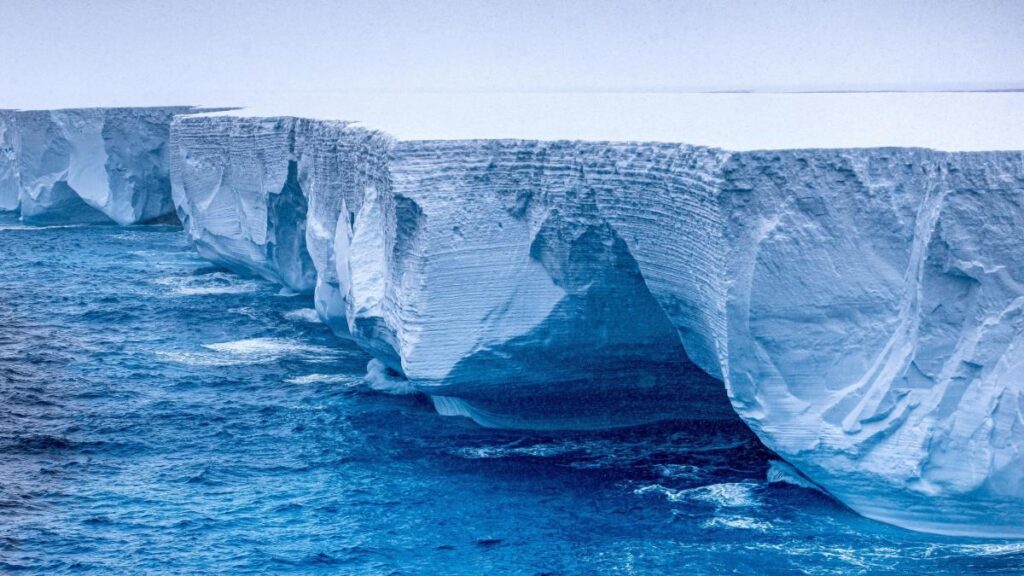The Iceberg A23a, the largest in the world, has recently resumed its movement after being trapped in a vortex for most of the year. This massive iceberg, covering an area of 3,800 square kilometers (1,500 square miles) and measuring 400 meters (1,312 feet) in thickness, broke free from Antarctica in 1986. However, it soon found itself stuck just off the Antarctic coast due to its considerable depth, which caused its base to become lodged on the floor of the Weddell Sea, a part of the Southern Ocean. For over 30 years, A23a remained static in this position until it began moving northward in 2020.
Since the spring of 2023, A23a had been caught in a rotating column of water near the South Orkney Islands, causing it to spin in place. Recently, the British Antarctic Survey (BAS) announced that the iceberg is now drifting further north. Dr. Andrew Meijers, an oceanographer at BAS, expressed enthusiasm about A23a’s movement, stating that it is an exciting development after periods of stagnation. Scientists are keen to observe whether A23a will follow a similar route to other large icebergs that have broken off from Antarctica, as its path could provide insights into the behavior of such massive ice formations.
As A23a progresses northward, it is expected to eventually exit the Southern Ocean and enter the warmer waters of the Atlantic Ocean. Within this warmer environment, the iceberg will likely break apart into smaller chunks and gradually melt. Dr. Meijers and his colleagues at the BAS are particularly interested in studying the effects of icebergs on local ecosystems. A23a’s journey will provide an opportunity to investigate how such significant ice formations interact with marine life and contribute to nutrient distribution in the oceans.
In the past year, researchers on board the RRS Sir David Attenborough collected valuable data from the waters surrounding A23a. Biogeochemist Laura Taylor, a member of the research crew, noted the unique role that large icebergs play in the marine ecosystem. She explained that these giant ice formations can supply nutrients to the surrounding waters, fostering the development of healthy ecosystems in regions that are otherwise less productive.
Despite the understanding that icebergs like A23a have a positive impact on marine ecosystems, many questions remain regarding how the size and origin of specific icebergs influence these ecological processes. The research conducted by BAS aims to shed light on these uncertainties as they track A23a’s path and monitor its effects on varying environmental conditions.
The movement of A23a represents not just an intriguing natural phenomenon but also an important opportunity for scientific study. The iceberg’s journey through the Southern Ocean and into the Atlantic could provide critical data on climate change and its impacts on polar ice dynamics and marine ecosystems. As researchers continue to monitor the iceberg, they hope to uncover new findings that could enhance our understanding of how such ice giants interact with the world’s oceans. The outcome of A23a’s drift remains to be seen, but its movement is a reminder of the complex interconnections within the Earth’s climate and marine systems.

